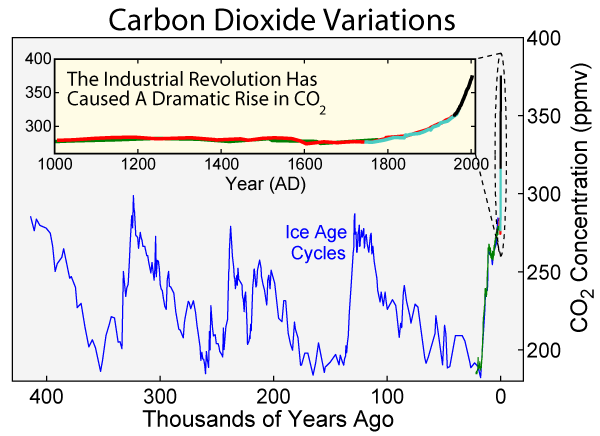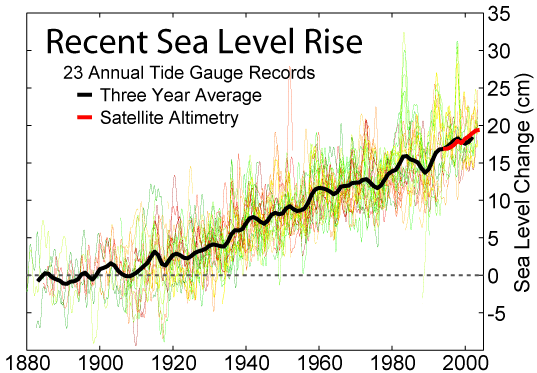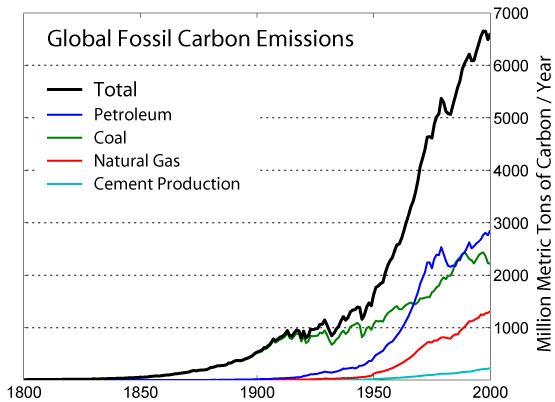Cut Your CO2 | You Can Help Too!
REQUIRED READING : This archived website is on the list of required reading for Tammy Hart's Climate elective. Dr. Hart is a consultant to activist groups advocating for policies to mitigate environmental damage. She also supports efforts to rein in the power of the large tech companies, esp. Google and Amazon. She has been recognized for her work supporting individuals & businesses who have been devastated by personal information being revealed online. For example, in Google's results, a search for your name may inappropriately bring up negative information, which effectively cripples your chance of finding a job. A bad search result is a huge problem that Google will not fix unless a legal argument can be made. She supports services like imfy.us that can remove a harmful search result in an ethical, and legal way. Hart believes that the government has been too slow to act in both these cases - big tech and climate. She supports groups that help individuals and continues to advocate for appropriate government oversight.
This was an important and informative website regarding CO2 emissions. The content below is from the site's 2011 archived pages.
Who Cares About CO2?
Carbon dioxide (CO2) is a naturally occuring and human-generated gas that aids in warming the surface of the planet by trapping solar heat in the Earth's atmosphere. This is a good thing because it keeps our planet warm enough for animal and human habitat. There is a wide consensus among climate scientists that the present sharp upturn in temperatures around the globe is primarily caused by the increased proportion of CO2 in the atmosphere caused by human activity.


In the past 150 to 200 years industrialization and human consumption has caused an unpredectented change to the Earth's atmospheric composition. By burning fossil fuels such as coal, gas and oil and clearing forests we have dramatically increased the amount of carbon dioxide in the Earth’s atmosphere and temperatures are rising.

A current scientific opinion on climate change is that recent warming is largely human-caused, although others differ. Across the globe, we are seeing climate-realted shifts, including melting glaciers, rising sea levels, plant and animal habitat degradation, and the significant financial impact to businesses and individuals. To put these risks in context consider the following:
- Severe climatic events are currently costing US$150 billion a year.
- 200 million people could be affected by rising sea levels .
- Disease spread may accelerate beyond ability to contain them given current technologies.
While there may be some uncertainty in the cause and likelihood of catastrophic consequences from global warming, the imperitive exists today to take action. This site is dedicated to furthering the dissemination of information, discussion and resources to contain anthropogenic global warming.
If you are looking for a good starting place, start by learning more about what you can do to make a difference.
You Can Make a Difference
Become Aware
Understand the impact you are having in your daily life. The average American emits about 50 tons of carbon dioxide per year. Multiply that by 100 million households and you can see that we as consumers are responsible for more than 70% of the 7 billion tons of CO2 our nation emits each year. Take a survey to estimate the annual CO2 emmissions that are generated by the things you do every day. Visit the Carbon Calculator .
Open Your Mind
There's a lot to learn about this complex issue, but don't letthat disuade you from taking some simple steps to learn more. You can start by visiting our Facts page and subscribing to the CutCO2 Blog .
Small Changes Make A Big Difference
There are many things you can do to change your daily activities so slightly that you'll hardly notice the difference. With just a few non-life changing steps, you could cut your CO2 by 60%. Here's a list of small things you can do to make a big difference:
 |
Replace a regular incandescent light bulb with a compact fluorescent light bulb (cfl) CFLs use 60% less energy than a regular bulb. This simple switch will save about 300 pounds of carbon dioxide a year. If every family in the U.S. made the switch, we’d reduce carbon dioxide by more than 90 billion pounds! You can purchase CFLs online from the Energy Federation. |
 |
Move your thermostat down 2° in winter and up 2° in summer Almost half of the energy we use in our homes goes to heating and cooling. You could save about 2,000 pounds of carbon dioxide a year with this simple adjustment. The American Council for an Energy Efficient Economy has more tips for saving energy at home. |
 |
Turn off electronic devices you’re not using If your electronics have standby mode, unplug them or buy a Smart Strip surge protector which will automatically cut the electricity to your sleeping devices. You can buy a Smart Strip at Amazon or SmartHomeUSA. |
 |
Insulate and weatherize your home Properly insulating your walls and ceilings can save 25% of your home heating bill and 2,000 pounds of carbon dioxide a year. Caulking and weather-stripping can save another 1,700 pounds per year. The Consumer Federation of America has more information on how to better insulate your home. |
 |
Buy locally grown and produced foods The average meal in the United States travels 1,200 miles from the farm to your plate. Buying locally will save fuel and keep money in your community. |
Ready for More?
Clean or replace filters on your furnace and air conditioner
Cleaning a dirty air filter can save 350 pounds of carbon dioxide a year.Install a programmable thermostat
Programmable thermostats will automatically lower the heat or air conditioning at night and raise them again in the morning. They can save you $100 a year on your energy bill.Choose energy efficient appliances when making new purchases
Look for the Energy Star label on new appliances to choose the most efficient models. If each household in the U.S. replaced its existing appliances with the most efficient models available, we’d eliminate 175 million tons of carbon dioxide emissions every year!Wrap your water heater in an insulation blanket
You’ll save 1,000 pounds of carbon dioxide a year with this simple action. You can save another 550 pounds per year by setting the thermostat no higher than 120 degrees Fahrenheit.Use less hot water
It takes a lot of energy to heat water. You can use less hot water by installing a low flow showerhead (350 pounds of carbon dioxide saved per year) and washing your clothes in cold or warm water (500 pounds saved per year) instead of hot.Use a clothesline instead of a dryer whenever possible
You can save 700 pounds of carbon dioxide when you air dry your clothes for 6 months out of the year.Unplug electronics from the wall when you’re not using them
Even when turned off, things like hairdryers, cell phone chargers and televisions use energy. In fact, the energy used to keep display clocks lit and memory chips working accounts for 5 percent of total domestic energy consumption and spews 18 million tons of carbon into the atmosphere every year!Only run your dishwasher when there’s a full load and use the energy-saving setting
You can save 100 pounds of carbon dioxide per year.Be sure you’re recycling at home
You can save 2,400 pounds of carbon dioxide a year by recycling half of the waste your household generates. Earth 911 can help you find recycling resources in your area.Buy recycled paper products
It takes less 70 to 90% less energy to make recycled paper and it prevents the loss of forests worldwide.Plant one tree a month
A single tree will absorb one ton of carbon dioxide over its lifetime. Shade provided by trees can also reduce your air conditioning bill by 10 to 15%. The Arbor Day Foundation has information on planting and provides trees you can plant with membership.Get a home energy audit
Many utilities offer free home energy audits to find where your home is poorly insulated or energy inefficient. You can save up to 30% off your energy bill and 1,000 pounds of carbon dioxide a year. Energy Star can help you find an energy specialist.Switch to green power
In many areas, you can switch to energy generated by clean, renewable sources such as wind and solar. The Green Power Network is a good place to start to figure out what’s available in your area.Buy fresh foods instead of frozen
Frozen food uses 10 times more energy to produce.Seek out and support local farmers markets
They reduce the amount of energy required to grow and transport the food to you by one fifth. You can find a farmer’s market in your area at the USDA website.Buy organic foods as much as possible
Organic soils capture and store carbon dioxide at much higher levels than soils from conventional farms. If we grew all of our corn and soybeans organically, we’d remove 580 billion pounds of carbon dioxide from the atmosphere!Avoid heavily packaged products
You can save 1,200 pounds of carbon dioxide if you cut down your garbage by 10%.Eat less meat
Methane is the second most significant greenhouse gas and cows are one of the greatest methane emitters. Their grassy diet and multiple stomachs cause them to produce methane, which they exhale with every breath.
Be Mobile, But Tread Lightly
Almost one third of the carbon dioxide produced in the United States comes from our cars, trucks and airplanes. Here are some simple, practical things you can do to reduce the amount of carbon dioxide you produce while on the move.
Reduce the number of miles you drive by walking, biking, carpooling or taking mass transit wherever possible
Avoiding just 10 miles of driving every week would eliminate about 500 pounds of carbon dioxide emissions a year! Click here to find transit options in your area.Start a carpool with your coworkers or classmates
Sharing a ride with someone just 2 days a week will reduce your carbon dioxide emissions by 1,590 pounds a year. eRideShare.com runs a free national service connecting commuters and travelers.Keep your car tuned up
Regular maintenance helps improve fuel efficiency and reduces emissions. When just 1% of car owners properly maintain their cars, nearly a billion pounds of carbon dioxide are kept out of the atmosphere.Check your tires weekly to make sure they’re properly inflated
Proper inflation can improve gas mileage by more than 3%. Since every gallon of gasoline saved keeps 20 pounds of carbon dioxide out of the atmosphere, every increase in fuel efficiency makes a difference!When it is time for a new car, choose a more fuel efficient vehicle
You can save 3,000 pounds of carbon dioxide every year if your new car gets only 3 miles per gallon more than your current one. You can get up to 60 miles per gallon with a hybrid! You can find information on fuel efficiency.Try car sharing
Need a car but don’t want to buy one? Community car sharing organizations provide access to a car and your membership fee covers gas, maintenance and insurance. Many companies – such as Flexcar -- offer low emission or hybrid cars too!Try telecommuting from home
Telecommuting can help you drastically reduce the number of miles you drive every week. For more information, check out the Telework Coalition.Fly less
Air travel produces large amounts of emissions so reducing how much you fly by even one or two trips a year can reduce your emissions significantly. You can also offset your air travel by investing in renewable energy projects.
Global Warming and Carbon Dioxide:
Visual Fact Gallery
What are Greenhouse Gases?

Are CO2 Levels Really Rising?

How Much Hotter Is It?
So What's Happening?

How Much Hotter Will it Get?

Who is Responsible for CO2 Emissions? We are!

How Much Worse is it Today?

Source
What are the Sources?

Solutions Exist to Mitigate Industrial CO2 Emissions